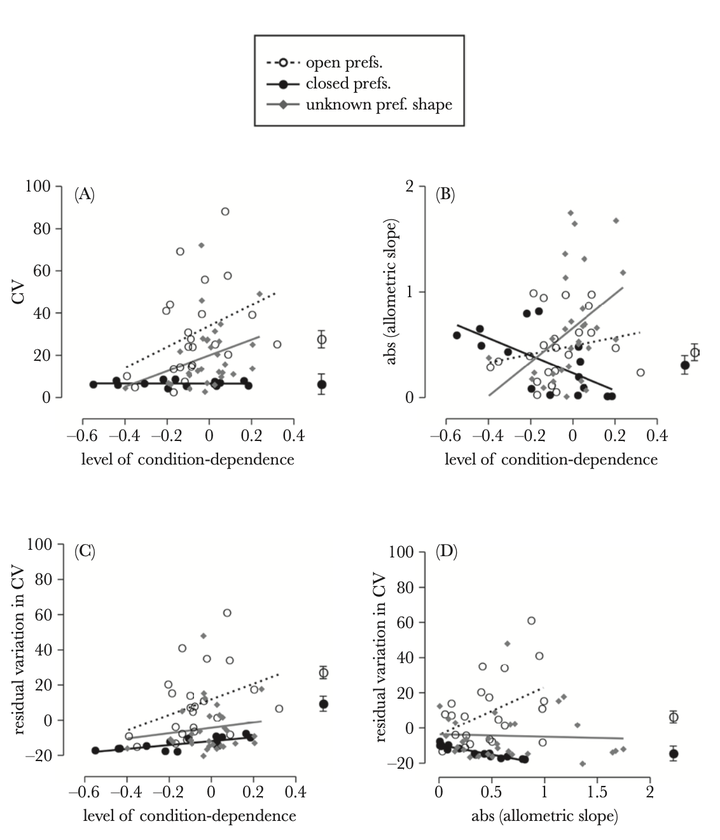
Abstract
We use allometric analysis to explore how acoustic signals scale on individual body size and to test hypotheses about the factors shaping relationships between signals and body size. Across case studies spanning birds, crickets, tree crickets, and tree frogs, we find that most signal traits had low coefficients of variation, shallow allometric scalings, and little dispersion around the allometric function. We relate variation in these measures to the shape of mate preferences and the level of condition dependence of signal traits. We find 3 major patterns: 1) signal traits associated with closed mate preferences had lower coefficients of variation and shallower allometries than signal traits with open preferences, 2) signal traits with higher levels of condition dependence had higher coefficients of variation and steeper allometries, and 3) the relationship between condition dependence and allometry varied with preference shape. We find no difference in coefficient of variation or allometry between advertisement and aggressive acoustic signals. Together, our findings suggest 2 main conclusions: 1) most acoustic signals do not appear to have been selected to function as indicators of body size and 2) an interplay between the form of selection and body size-related cost/benefit relationships of trait expression has great potential to explain variation in sexual allometries.